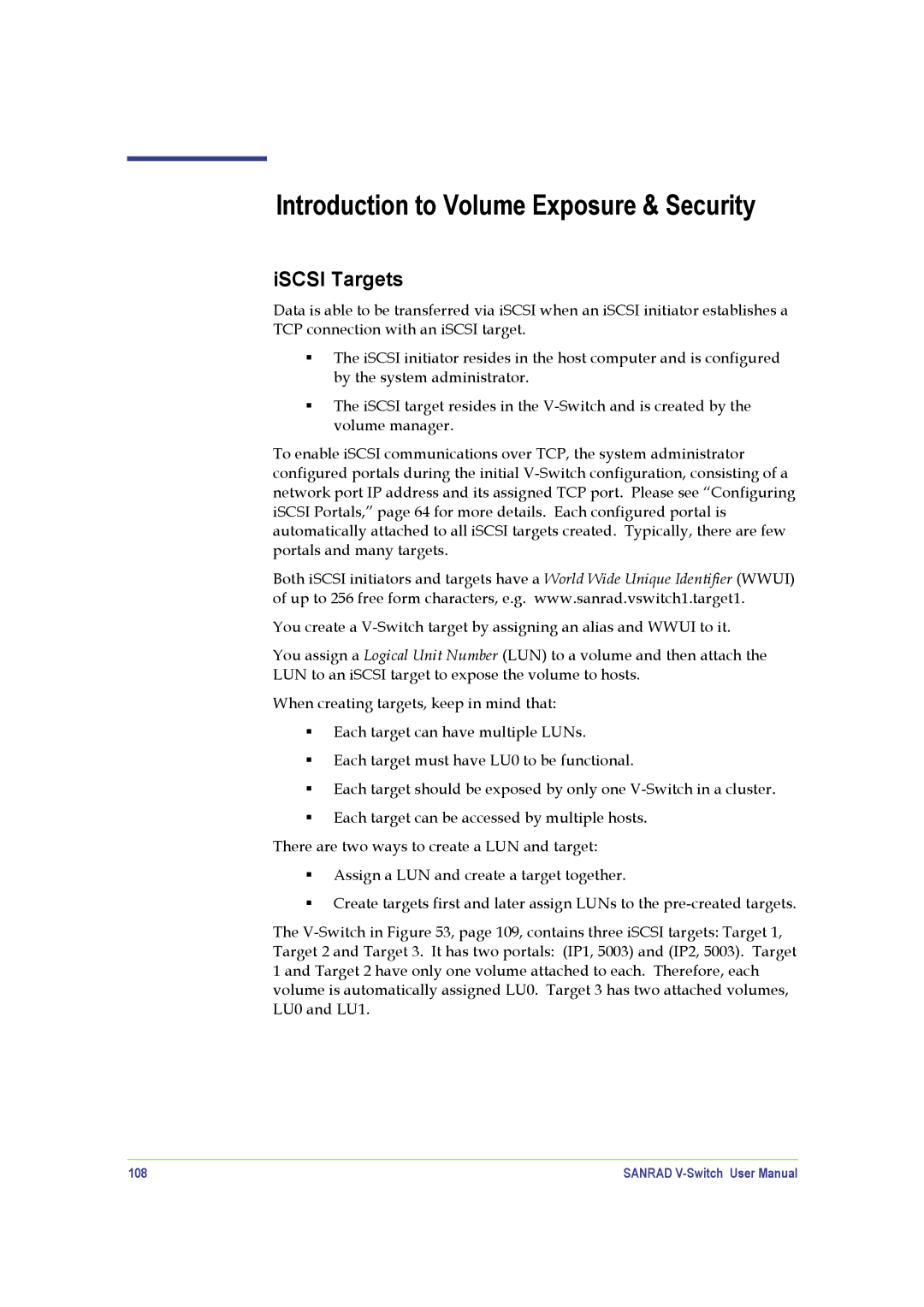
Introduction to Volume Exposure & Security
iSCSI Targets
Data is able to be transferred via iSCSI when an iSCSI initiator establishes a TCP connection with an iSCSI target.
The iSCSI initiator resides in the host computer and is configured by the system administrator.
The iSCSI target resides in the
To enable iSCSI communications over TCP, the system administrator configured portals during the initial
Both iSCSI initiators and targets have a World Wide Unique Identifier (WWUI) of up to 256 free form characters, e.g. www.sanrad.vswitch1.target1.
You create a
You assign a Logical Unit Number (LUN) to a volume and then attach the
LUN to an iSCSI target to expose the volume to hosts.
When creating targets, keep in mind that:
Each target can have multiple LUNs.
Each target must have LU0 to be functional.
Each target should be exposed by only one
Each target can be accessed by multiple hosts.
There are two ways to create a LUN and target:
Assign a LUN and create a target together.
Create targets first and later assign LUNs to the
The
Target 2 and Target 3. It has two portals: (IP1, 5003) and (IP2, 5003). Target 1 and Target 2 have only one volume attached to each. Therefore, each volume is automatically assigned LU0. Target 3 has two attached volumes, LU0 and LU1.
108 | SANRAD |
